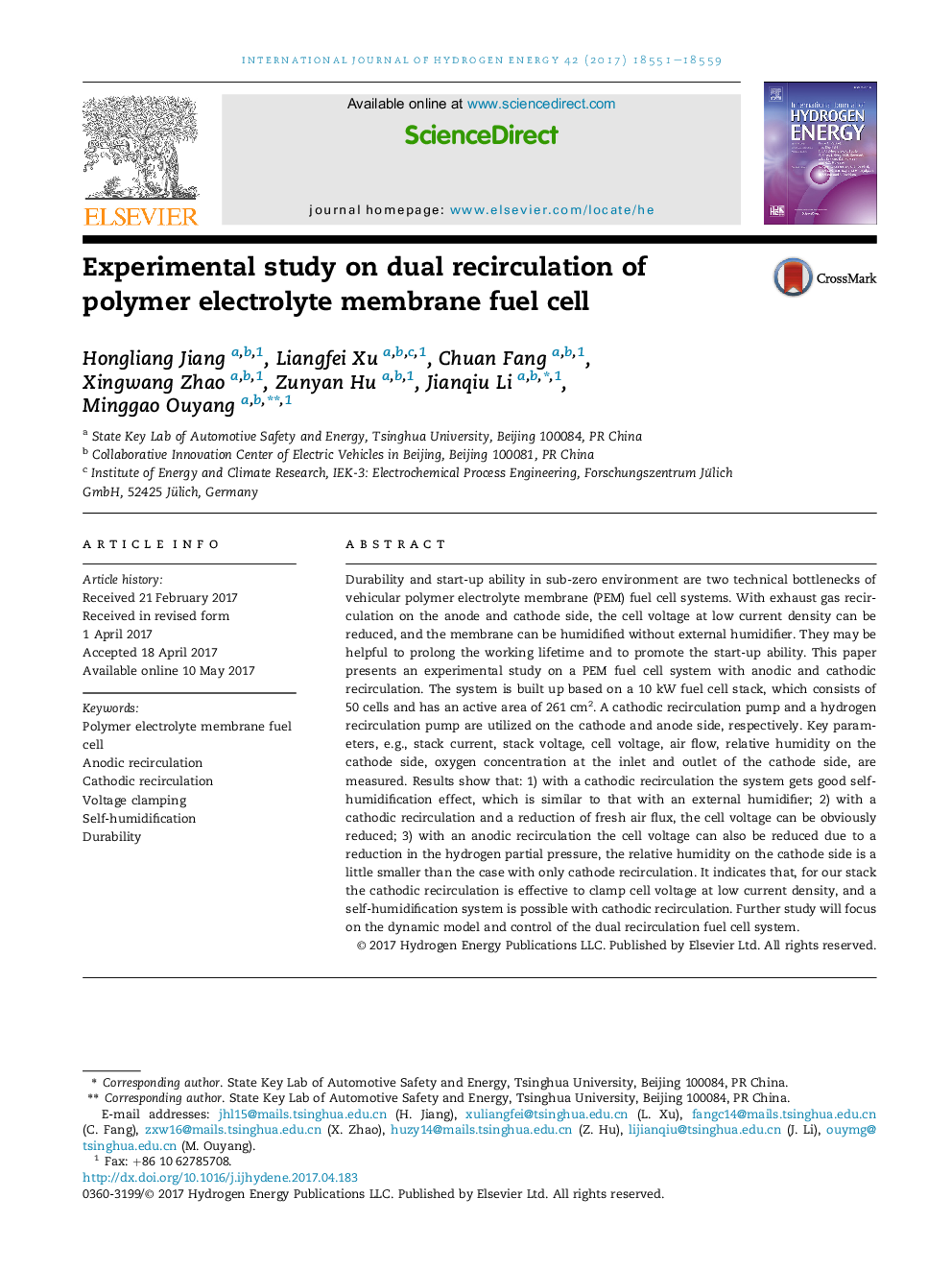| Article ID | Journal | Published Year | Pages | File Type |
|---|---|---|---|---|
| 5146220 | International Journal of Hydrogen Energy | 2017 | 9 Pages |
â¢Dual recirculation of PEMFC for durability and start-up ability is proposed.â¢A fuel cell system with dual recirculation is built up based on a 10 kW FC stack.â¢Self-humidification is realized through dual recirculation.â¢Cell voltage is reduced to under 0.8 V at low current condition in the experiment.
Durability and start-up ability in sub-zero environment are two technical bottlenecks of vehicular polymer electrolyte membrane (PEM) fuel cell systems. With exhaust gas recirculation on the anode and cathode side, the cell voltage at low current density can be reduced, and the membrane can be humidified without external humidifier. They may be helpful to prolong the working lifetime and to promote the start-up ability. This paper presents an experimental study on a PEM fuel cell system with anodic and cathodic recirculation. The system is built up based on a 10Â kW fuel cell stack, which consists of 50Â cells and has an active area of 261Â cm2. A cathodic recirculation pump and a hydrogen recirculation pump are utilized on the cathode and anode side, respectively. Key parameters, e.g., stack current, stack voltage, cell voltage, air flow, relative humidity on the cathode side, oxygen concentration at the inlet and outlet of the cathode side, are measured. Results show that: 1) with a cathodic recirculation the system gets good self-humidification effect, which is similar to that with an external humidifier; 2) with a cathodic recirculation and a reduction of fresh air flux, the cell voltage can be obviously reduced; 3) with an anodic recirculation the cell voltage can also be reduced due to a reduction in the hydrogen partial pressure, the relative humidity on the cathode side is a little smaller than the case with only cathode recirculation. It indicates that, for our stack the cathodic recirculation is effective to clamp cell voltage at low current density, and a self-humidification system is possible with cathodic recirculation. Further study will focus on the dynamic model and control of the dual recirculation fuel cell system.
